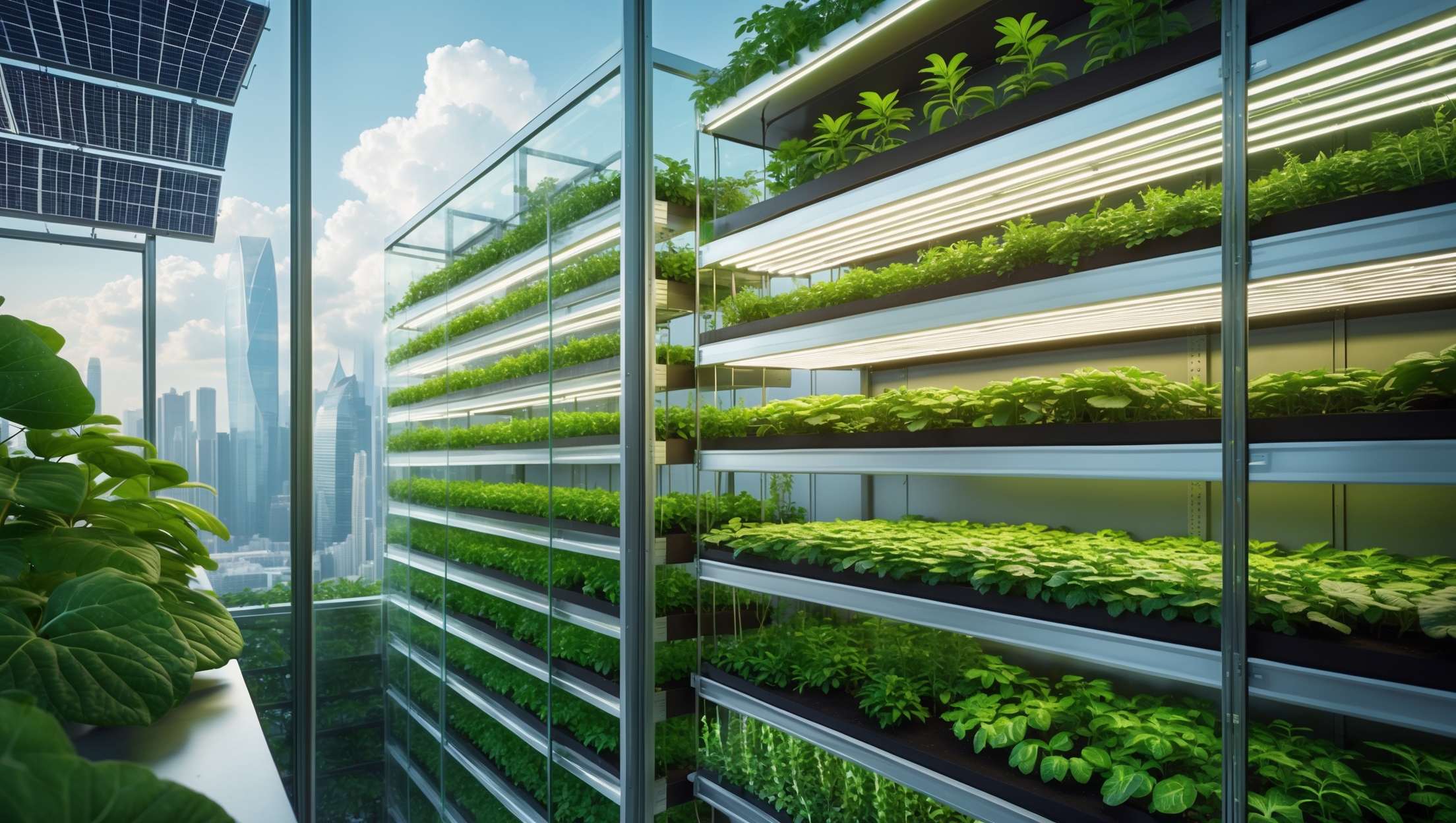Introduction: Why Insurance Matters for Urban Vertical Farms Powered by Renewables
Urban vertical farming has rapidly evolved from a niche experiment to a cornerstone of sustainable city living. By stacking crops in climate-controlled environments, often powered by renewable energy sources such as solar panels or wind turbines, these farms maximize land use, minimize water needs, and reduce food miles. But as with any innovative venture, there are risks—ranging from equipment failure to extreme weather, fire, cyberattacks, and regulatory changes. Insurance is not merely a formality; it is the backbone of risk management that ensures your farm’s resilience and long-term viability. Yet, many urban vertical farm owners are unaware of the unique insurance challenges and opportunities associated with integrating renewable energy systems into their operations. This guide will clarify the landscape, outlining the essential coverage types, common pitfalls, and expert strategies for securing appropriate protection for your investment. Whether you’re launching a new farm or scaling up, understanding the nuances of insurance for an urban vertical farm powered by renewables is critical for peace of mind and business continuity.
Understanding the Unique Risks of Renewable-Powered Vertical Farms
Complex Infrastructure
Unlike traditional farms, urban vertical farms rely on sophisticated infrastructure: hydroponic or aeroponic systems, automated sensors, HVAC, lighting (often LED), and renewable energy assets like solar arrays or battery storage. This complexity increases the risk of technical failures and interdependent losses. For example, a malfunction in the energy system can cascade into crop loss or environmental controls failing.
Urban Environment Hazards
Operating in densely populated areas introduces unique risks such as theft, vandalism, utility outages, and liability for neighboring properties. Insurance must account for these urban-specific exposures.
Regulatory and Compliance Issues
Urban farms often face evolving regulations around food safety, building codes, and renewable energy integration. Non-compliance or unintentional breaches can lead to fines, shutdowns, or liability claims.
Climate and Extreme Weather Events
While protected from some outdoor conditions, urban farms are still vulnerable to floods, fires, storms, and heatwaves—especially if renewable systems are exposed on rooftops.
Core Insurance Policies You Need
1. Property Insurance
- What it covers: Physical assets such as buildings, vertical racks, lighting, HVAC systems, renewable energy equipment (solar panels, inverters, batteries), and crops.
- Key considerations: Ensure your policy includes all renewable energy systems and accounts for the replacement cost, not depreciated value. Specify coverage for indoor crops, which some insurers may exclude or cap.
2. Equipment Breakdown Insurance
- What it covers: Mechanical or electrical breakdown of critical systems—hydroponics, climate controls, solar inverters, battery storage, and more.
- Key considerations: Confirm that coverage extends to all renewable energy components, including the cost of expedited repairs to minimize crop loss.
3. Crop Insurance
- What it covers: Loss of crops due to covered perils like equipment failure, power outage, fire, or other environmental hazards.
- Key considerations: Traditional crop insurance rarely covers indoor or hydroponic crops. Seek specialty insurers or endorsements specific to controlled-environment agriculture (CEA).
4. Business Interruption Insurance
- What it covers: Lost income and fixed expenses if your operation is interrupted by a covered event (e.g., fire, major equipment breakdown).
- Key considerations: Calculate the potential downtime for repairs, especially for renewable energy infrastructure. Make sure the policy covers extended interruption scenarios relevant to urban farms.
5. General Liability Insurance
- What it covers: Injuries to visitors, third-party property damage, or claims arising from your products (like contaminated produce).
- Key considerations: Urban locations mean higher public exposure. Ensure limits match the local risk profile and that products liability is included.
6. Environmental Liability Insurance
- What it covers: Pollution or contamination events (e.g., nutrient leaks, battery spills) that affect your property or neighboring areas.
- Key considerations: Renewable energy systems, particularly batteries, may have unique environmental risks. This coverage is essential if you handle chemicals or use large-scale energy storage.
7. Cyber Insurance
- What it covers: Losses from cyberattacks, hacking, or data breaches affecting your automated systems, customer data, or supply chain.
- Key considerations: Modern urban farms are highly digitized, making them potential targets for ransomware or sabotage. Ensure your policy includes both first- and third-party coverage.
8. Workers’ Compensation Insurance
- What it covers: Employee injuries or illnesses sustained on the job.
- Key considerations: Required by law in most jurisdictions. Highlight any unique risks (e.g., working at heights, handling electrical equipment).
Essential Coverage Enhancements and Endorsements
Solar and Battery Equipment Endorsements
Standard property or equipment breakdown policies may exclude or limit coverage for solar panels, inverters, and battery storage. Secure endorsements specifically recognizing these assets, especially for rooftop installations where wind, hail, and fire risks are elevated.
Utility Interruption Coverage
If your farm is grid-tied, consider coverage for losses due to external utility interruptions. This is especially important if your energy resilience depends on grid availability during periods of low solar or wind generation.
Product Recall and Contamination Coverage
Urban farms supplying retailers or restaurants should consider insurance that covers the costs of recalling contaminated produce, including notification, disposal, and public relations expenses.
Green Upgrade Coverage
Some insurers offer “green” endorsements, which pay for upgrades to more efficient or sustainable equipment after a covered loss. For example, if your solar inverters are destroyed in a fire, this coverage would help you replace them with next-generation, higher-efficiency models.
How to Assess and Document Your Insurance Needs
Conduct a Comprehensive Risk Assessment
Start by mapping out every asset, process, and exposure within your operation. This includes:
- Physical assets: buildings, racks, lighting, HVAC, energy systems
- Supply chain: seed suppliers, nutrient delivery, distribution partners
- Operational dependencies: data systems, utility services, staff expertise
- Regulatory obligations: city permits, food safety certifications, renewable energy standards
Identify the most likely and most costly risks. Quantify the potential impact of worst-case scenarios—such as a fire that destroys both your crop and rooftop solar, or a cyberattack that disables your automation for a week.
Maintain Thorough Documentation
Keep detailed records of equipment purchases, serial numbers, maintenance logs, and upgrades (especially for renewable systems). Photograph installations and store digital copies offsite. Good documentation speeds up claims and ensures full reimbursement.
Consult with an Insurance Broker Experienced in Urban Ag and Renewables
Not all insurance agents understand the intricacies of urban vertical farming or renewable energy integration. Seek out brokers who have insured similar operations and can guide you toward specialty policies and endorsements.
Common Insurance Mistakes Urban Vertical Farms Should Avoid
- Underinsuring equipment or crops. Replacement costs for renewable energy systems and specialized farm equipment can be higher than expected. Review policy limits annually.
- Assuming standard property insurance covers all risks. Many policies exclude indoor crops, solar, or battery systems unless specifically endorsed.
- Overlooking business interruption scenarios unique to urban farms. Consider the time required to source replacement parts for advanced systems or to comply with city inspections after a loss.
- Failing to update coverage after expansions or upgrades. New hydroponic racks, expanded solar arrays, or added automation should trigger a policy review.
- Neglecting cyber and product liability risks. As farms digitize and supply broader markets, these exposures become more significant.
Cost Considerations and Budgeting for Insurance
Premium Factors
Your insurance costs will depend on several variables:
- Value and complexity of assets (especially renewable energy systems)
- Location (urban density, local crime rates, weather risks)
- Scale of operations (area, crop volume, staff size)
- Types of crops and sales channels
- Loss history and risk mitigation measures (e.g., fire suppression, security systems, redundancy in energy supply)
Strategies to Optimize Insurance Costs
- Bundle policies for property, liability, and equipment breakdown through a single insurer.
- Invest in risk reduction (alarms, cameras, fire suppression, robust cyber protocols) to qualify for discounts.
- Review deductibles: Higher deductibles lower premiums but increase out-of-pocket costs after a loss. Balance risk tolerance and cash flow.
- Reassess asset values annually to prevent over- or underinsurance as technology and infrastructure evolve.
- Document all risk mitigation steps to present a stronger case to underwriters.
Claim Scenarios: How Insurance Responds in Real-World Incidents
Scenario 1: Fire Damages Farm and Solar Array
A rooftop electrical fire spreads, damaging hydroponic systems, destroying part of the crop, and melting several solar panels. Property insurance covers the physical damage; equipment breakdown pays for repairs to the automation systems; crop insurance reimburses for lost produce; green upgrade endorsements allow replacement with more efficient panels.
Scenario 2: Ransomware Attack Disrupts Operations
A cybercriminal breaches the control system, shutting down irrigation and lighting. Crops are lost and customer data exposed. Cyber insurance covers ransom payments, notification costs, and income lost during the outage.
Scenario 3: Battery Storage Leak Results in Environmental Claim
A lithium battery in the energy storage system leaks, causing chemical contamination. Environmental liability insurance covers cleanup, legal fees, and any third-party claims from neighboring property owners.
Expert Tips for a Resilient, Insured Urban Vertical Farm
- Integrate insurance planning into your initial business model, not as an afterthought.
- Engage with insurers and brokers during farm design to identify insurability issues early (e.g., rooftop access, fire suppression systems).
- Stay abreast of regulatory changes that could affect insurance requirements or liability.
- Update your risk assessment and insurance coverage after any significant operational change or expansion.
- Combine insurance with robust physical, digital, and operational risk management for maximum resilience.
Conclusion: Building Sustainable Security for the Future of Urban Food
Urban vertical farming, especially when powered by renewable energy, is at the forefront of sustainable city living. However, its promise comes with unique challenges—complex infrastructure, urban hazards, and a rapidly changing regulatory environment. Insurance is your safety net, transforming potential setbacks into manageable events and ensuring that your investment and mission are protected for the long term.
Successful insurance for urban vertical farms goes beyond simply purchasing a policy. It requires a deep understanding of the interplay between advanced technology, urban risk, and sustainable business practices. By assessing risks comprehensively, maintaining meticulous documentation, and working with experienced brokers, you can craft a coverage portfolio that safeguards your assets, employees, and reputation. Regularly revisiting your insurance as your farm grows or technology evolves ensures ongoing protection and peace of mind.
Remember: resilient urban vertical farms not only deliver fresh food and reduced emissions but also thrive despite unexpected setbacks. With the right insurance in place, you’re empowered to innovate, expand, and contribute to a greener, more food-secure urban future. Make insurance an integral part of your sustainability strategy—and watch your farm flourish for years to come.





Could you provide more insight on how insurance policies typically address the risk of cascading failures in urban vertical farms, especially if a renewable energy system outage leads to crop loss or climate control issues?
Insurance policies for urban vertical farms usually treat cascading failures—like those caused by renewable energy outages—as complex risks. Standard crop insurance might not cover losses from equipment or energy system failures unless specifically added as an endorsement. Many farms secure business interruption and equipment breakdown coverage, which can help address losses from climate control system failures caused by power outages. It’s important to review policy exclusions and discuss with your insurer about coverage extensions for these interconnected risks.